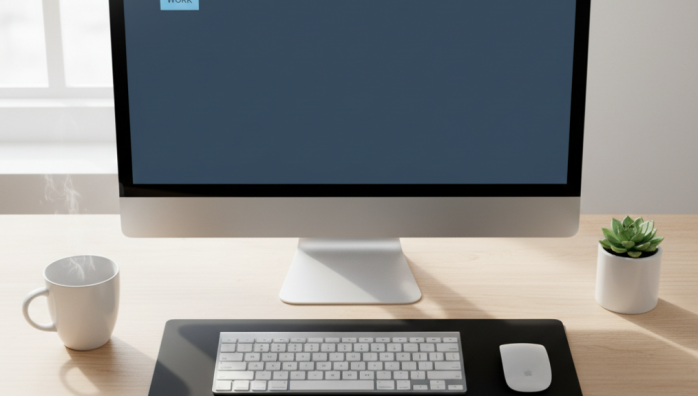Creating a Minimalist Desktop Environment
by admin in Productivity & Tools 18 - Last Update November 25, 2025

I remember the exact moment I hit my digital breaking point. My desktop was a chaotic collage of project files, random screenshots, and installer icons I\'d forgotten about months ago. Every time I booted up my computer, a small wave of anxiety washed over me. It felt like walking into a messy room – I knew I had to clean it, but I didn\'t know where to start. That chaos, I realized, was bleeding into my work, creating a constant, low-level distraction. That\'s when I decided to go minimalist, and honestly, it changed more than just my screen\'s appearance.
Why a clean desktop is more than just aesthetics
For a long time, I thought of a clean desktop as just a cosmetic preference, something for people who cared about how things looked. I was wrong. I discovered that my digital environment directly mirrors my mental state. A cluttered screen led to a cluttered mind. By intentionally creating visual space, I found it easier to focus on a single task. There were no rogue icons catching my eye, no \'to-be-sorted\' files whispering for my attention. It was just me and the work I needed to do. This wasn\'t about being tidy for the sake of it; it was a strategic move to reclaim my focus.
My practical steps to digital desktop serenity
Getting here wasn\'t an overnight process. I tried a few complicated systems that just added more work. Eventually, I landed on a simple, sustainable approach that has worked for me for over a year now. It’s less about rigid rules and more about building intentional habits.
Step 1: The \'everything bucket\' method
First, I did the scariest part: I created a single folder on my desktop called \'Archive\' and dragged every single file and shortcut into it. Yes, everything. It felt radical, but it instantly gave me a clean slate. This wasn\'t deleting anything; it was just moving the clutter out of sight. Over the next week, if I needed a file, I\'d retrieve it from the \'Archive\' and then decide its proper, permanent home (usually in my main documents folder, not the desktop). After a month, I reviewed what was left in the \'Archive\' and deleted about 90% of it. I hadn\'t needed it at all.
Step 2: Choosing a wallpaper that calms, not distracts
I used to have busy, beautiful photographs as my wallpaper. I realized they were just another form of visual noise. My breakthrough was switching to a simple, neutral background. I\'m talking a solid color, a subtle gradient, or an abstract texture. The goal is for the background to recede, not to pop. It acts as a blank canvas that makes the few items you do keep on your desktop feel intentional and important.
Step 3: The temporary workspace rule
My desktop is no longer a storage drive. I treat it as a temporary workbench. If I\'m actively working on a project, its folder might live on the desktop for the day. A file I need to send in an hour? It can sit there. But the rule is firm: by the end of the day, everything must be moved off the workbench and into its proper home in my file system. This single habit prevents the slow creep of clutter from ever taking hold again.
The surprising mental shift
Adopting a minimalist desktop environment has been less about organization and more about mindfulness. It’s a daily practice of asking, \'Does this need to be in my immediate field of vision?\' Most of the time, the answer is no. This small, consistent act of digital curation has brought a surprising amount of peace and clarity to my workday. If you feel overwhelmed by your digital space, I genuinely encourage you to try it. Start with the \'everything bucket\' and see how it feels. You might be surprised by the focus you reclaim.














